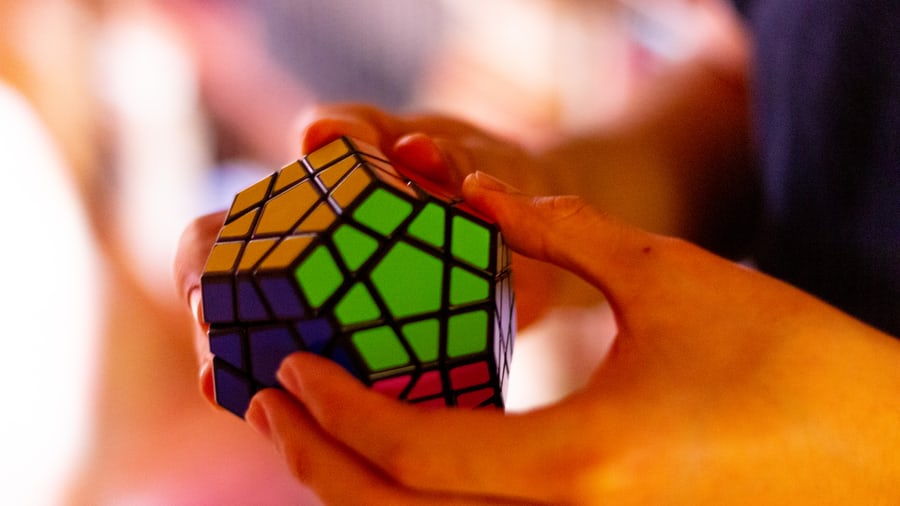Every aspect of our lives engages our brain, and it, like any other body element, requires attention. Many people, especially as they get older, place a high value on brain exercise in order to improve memory, focus, or daily functionality. People of all ages, however, can benefit from doing a few basic brain exercises on a regular basis.
The brain is the body’s most complicated organ. It controls a variety of physical functions, analyzes sensory input, and processes our emotions. It also stores memory, intelligence, and creativity. Despite the fact that the brain gets plenty of exercise on a daily basis, certain exercises may aid to improve brain function and connections. As a result, this protects the brain from age-related degeneration.
Even while sleeping, the brain is constantly functioning. Certain activities, on the other hand, can stimulate the brain in novel ways, potentially improving memory, cognitive function, and creativity. This article discusses a few memory, cognition and creative exercises that may be extremely beneficial.
Brain exercises to Boost Memory

Regular and varied physical activity, including aerobic, power, flexibility, and balance exercises, is required to maintain your body fitness. However, one may be unclear of the best techniques to train their brain in order to stay mentally fit. Only a few activities qualify as good brain training, and many of those that are widely promoted as such fail to live up to their billing.
A comprehensive list of ways to improve memory and cognitive abilities has been showcased below.
1. The 4 details observation activity
This brain exercise entails recalling four details about people one meets in public. Consider someone who is wearing a red hat, blonde hair, a rectangular ring, and a yellow jacket. The idea is to first notice the details and then remember them afterwards. A few experts refer to these kinds of brain activities as “passive memory training”.
Because no special memory strategies, such as mnemonics, are used in these activities, they are termed passive. Instead, one just asks their brain to do what it was designed to do: recall things. To begin, one can try monitoring simply one individual per day. They can more information or persons after they believe they have mastered remembering four details at a time.
2. Make a memory map of a town
While one may think they can traverse the streets of their city with their eyes closed, they can test their memory by sketching a map of their town or area from memory. One can also include important thoroughfares, prominent side streets, and local landmarks in their list.
Following this, they can compare their memory map to a real map of the area once they have finished. Some of the items they overlooked may even be surprising to them. If this project is too simple for someone, they can try sketching a lesser-known area from memory, such as a map of the entire United States, and labeling every state or country.
When one is behind the wheel of their vehicle, getting to the store or the doctor’s office may appear uncomplicated and nearly automated. Pushing oneself to recall the structure of the neighborhood, as well as to draw and identify it, helps to stimulate a range of brain areas.
3. Have a good time with a jigsaw puzzle
Working on a jigsaw puzzle is a wonderful way to exercise the brain, whether one is putting together a 100-piece image of the Eiffel Tower or combining 500 pieces to construct Mickey Mouse.
Jigsaw puzzles have been demonstrated to utilize numerous cognitive capacities and to be a protective factor for visuospatial cognitive aging in studies. To put it another way, when putting together a jigsaw puzzle, one must examine individual parts and determine where they go into the bigger picture. This might be an excellent method to stretch and challenge the mind.

4. Educating oneself about a new topic or skill
This brain exercise demands some dedication, but it could be the most beneficial. Learning a new skill is one method to keep the mind active and provide fresh challenges.
Researchers allocated older participants to learn new skills ranging from digital photography to quilting in one trial. After that, they conducted memory tests and compared the experimental and control groups. The participants in the control groups did things like watch movies and listen to the radio, which were both enjoyable and not mentally difficult. Only individuals who had learnt a new skill showed improvements on memory tests, according to the study. They also noticed that these memory benefits persisted a year later when they were examined again.
Learning a new language, learning to play a musical instrument, or picking up a new pastime are some of the things one might wish to attempt. They will not only be stretching their mind, but they will also be learning something new all the time as they expand their skills and gain experience.
5. Making use of all of one’s senses
According to a 2015 study, engaging all of one’s senses can assist to develop their brain. One may try practicing tasks that involve all five of their senses at the same time to work their senses and their brain. They may bake cookies, go to a farmer’s market, or try a new restaurant while focusing on smelling, touching, tasting, seeing, and hearing everything at the same time.
6. Reciting what others have said and remembering it
One must train their brain to pay attention to what others are saying and to recall all they have said. They can begin by establishing a sense of presence in the present moment by mentally repeating the words that someone says to them. They can silently repeat everything the other person is saying in their head.
This is a brain exercise that improves one’s cognitive performance while also allowing their brain to remember more information.

7. Meditation
Following that is a brain exercise that has been used for thousands of years but has only recently garnered widespread recognition for its efficacy. Meditation is a brain activity one may not have considered, but it can be highly beneficial.
Mindfulness meditation, in particular, is all the vogue right now, with positive psychologists, business leaders, and alternative health practitioners touting its benefits. One may consider some of the evidence confirming the many advantages of meditation before dismissing this old Buddhist tradition as too New Age for them.
According to research published in 2011, mindfulness meditation can help activate new brain connections, resulting in better self-awareness and mental flexibility. Meditation can also aid with attention, focus, empathy, and even immunity. Additionally, meditation improves working memory capacity.
8. Making an effort to use the non-dominant hand
Following that is a fascinating brain exercise that one neurobiologist claims can help “keep your brain alive.” Neurobiologist Lawrence Katz advocates using your non-dominant hand to train your intellect in his book, ‘Keep Your Brain Alive: 83 Neurobic Exercises to Help Prevent Memory Loss and Increase Mental Fitness.’
Since it can be so difficult to use one’s opposite hand, it can be a terrific technique to improve brain activity. When one is eating dinner or attempting to write something down, they can try swapping hands. It will be challenging, but that is just the point. The brain exercises that are most effective are ones that are not always simple.
Impact of brain exercises on creativity
Children are accustomed to seeing things for what they might be rather than what they are at face value. As an adult, one becomes less susceptible to playful and creative thinking as they face more criticism and feedback. Their ideas make them more easily ashamed.
As a result, they lose their ability to be innovative. It is easy to believe that creativity is finite and that one may never get it back, but when one hits a mental roadblock, it is critical to take a break and come back with a fresh viewpoint. This allows them to use more of their right brain than they previously could.
Fortunately, one can train and enhance their creativity with brain exercises, just like any other skill. Regularly practicing brain exercises may thus work as a cognitive enhancer, increasing creativity in a cost-effective and healthful manner. Brain exercises are a great way to rekindle that spark and get one’s productivity rolling again.
Final Thoughts
No matter one’s age, focusing on their brain health is one of the most effective ways to increase their concentration, focus, memory, and mental agility.
They will be challenging their mind, sharpening their cognitive skills, and potentially learning something new and enriching along the way if they incorporate brain exercises into their daily life.
Image Sources: Shutterstock and Unsplash
For more information on brain exercises to boost your mental capability, visit our blog.
Create. Engage. Inspire.















